2019 Subaru Forester Vs Volkswagen Tiguan Comparison

The number of great compact crossovers keeps increasing, especially as newly updated vehicles like the Subaru Forester and Volkswagen Tiguan arrive boasting more features and space.
These two are fairly new and offer a lot of technology as well, with the Subaru packing features that prioritize safety and confidence, while the VW has large screens and premium appointments. Choosing which one to buy depends on the needs of the buyer, but there are a few constants to consider when buying a small crossover. The vehicle needs to be spacious and capable with confidence-inspiring handling in a combination of conditions. It also needs to be comfortable and easy to live with considerate technology that makes traveling easier and less stressful. With those criteria in mind, let’s take a closer look at these two vehicles.
Get a Quote on a New Subaru Forester or Volkswagen TiguanTalkin’ Tiguan
The VW Tiguan has grown significantly in this iteration, its second-generation model. The last generation Tiguan was a well-received vehicle, staying in the lineup even when this new model hit the streets. Fans liked the way the old model felt just like a Golf compact but with the availability of all-wheel drive. This new model, though, is a far departure from that feeling, emphasizing a more spacious cabin and more versatility.
ALSO SEE: Ford Edge vs Explorer: Which SUV is Right for You?
There are two versions of the Tiguan available – if you opt for the front-wheel-drive model, you can squeeze an extra two passengers in the car’s the third row for a total of 7 people. All-wheel-drive versions, like the one tested, come standard with 5 passengers and have to pay an extra $595 for the third row. The Tiguan has plenty of room for passengers and the headroom in the rear of the vehicle is commendable. Five-passenger Tiguans feature 37.6 cubic feet of storage, which expands to 73.5 when you fold the rear seats. Both of these figures are greater than what’s available in the Forester because we had a fully loaded model with the moonroof.
Dropping the Ball
While the Tiguan sounds good on paper, there are a few things that the numbers don’t describe, like the uncomfortable rear seats — they feel like they have almost no cushioning and are poorly angled. It makes sitting in the back of the Tiguan feel like a punishment. Some of the materials used in the cabin also feel low grade, with abundant use of hard plastics. The upside is that these materials can be easier to clean and might be more durable.
The front seats are a marginally nicer place to sit, although the switchgear feels a bit tacky here too. Visibility from the driver’s seat isn’t as good as the Forester, and the VW infotainment system takes some getting used to. It uses hidden buttons and menus that aren’t always in the most logical places, and you can’t use the map on the main screen if you opt to put it on the virtual cockpit. That’s interesting because there are some scenarios where the passenger would like to see where the car is or next turn is coming up, while also having the driver privy to the same information in front of them in the digital gauge cluster.
ALSO SEE: CVT Transmission Pros and Cons
Solid Engine, Unrefined Transmission
Under the hood is a 2.0-liter turbocharged four-cylinder engine that makes 184 horsepower and 221 lb-ft of torque. It feels great off the line with sporty and responsive power delivery at low speeds. However, at higher speeds, the engine sounds buzzy and even a bit gutless with limited acceleration. Simply put, the Tiguan doesn’t feel as good at highway speeds than it does at city speeds. It earns a combined 24 MPG which is a bit limiting, especially since you need to be really conscious of your driving style to achieve good fuel economy. The upside is that this turbocharged engine doesn’t demand premium fuel.
The eight-speed automatic didn’t deliver its best manners during our test, often slamming into gears with a resounding and troubling clunk. It also was a bit too hesitant to drop gears at times, making the vehicle feel less responsive then it could.
The Tiguan has a handy dial to change the drive mode, including settings to accommodate different surface conditions, but like the infotainment system, the usability aspect of it could be refined and improved. While the car defaults to an on-road focused setting, pressing the button allows you to change it between Normal, Sport, Eco and Individual modes, which impact the car’s engine response, transmission behavior and steering weight. Beyond that, you can turn the dial to Snow, Offroad and a customized offroad setting. In snow mode, the traction control system and throttle response work together to ensure that the car maintains control in slippery conditions. The offroad mode is similar to the snow mode but relaxes the stability control system to help the vehicle through sticky situations. It also automatically applies hill descent control on grades greater than 10 percent.
Features for a Price
The Tiguan features an average drive with nothing that stands out as very good or too bad. The car feels like a larger Golf, not in the tight, fun way the old one used to, but in an oversized, cumbersome way. The advantage to the Tiguan is that it’s packed with technology and features, including adaptive cruise control, lane keeping assist, forward collision warning, a handy birds-eye-view camera for parking and automatic high beams. While it starts at $25,290 for the basic, front-wheel drive, the tester we had featured everything, including all-wheel drive and the slick R-Line goodies, ringing in at $39,890 or $44,715 for Canadian buyers.
Compare Specs
| Vehicle | 2019 Volkswagen Tiguan | Advantage | 2019 Subaru Forester |
|---|---|---|---|
| Engine | 1.8-liter turbocharged four-cylinder | - | 2.5-liter boxer four-cylinder |
| Horsepower | 184 | Tiguan | 182 |
| Torque | 221 | Tiguan | 176 |
| Transmission | Eight Speed Auto | - | CVT |
| Combined Fuel Economy (MPG) | 24 | Forester | 29 |
| Combined Fuel Economy (l/100kms) | 10.0 | Forester | 8.2 |
| Passenger Volume | 101.1 cubic feet | Forester | 107.8 cubic feet |
| Cargo Space (seats up/down) | 37.6/73.5 cu-ft | Tiguan | 33.0/70.9 cu-ft |
| Price (USD} | $39,890 | Forester | $35,270 |
| Price (CAD) | $44,715 | Forester | $41,220 |
Superior Forester?
The Subaru Forester rings the register at $35,270 ($41,220 for Canadian customers), which is a good chunk of change less than the Tiguan. What is it missing? Not much, but some buyers may find the 2.5-liter boxer four-cylinder in the Subaru to be lacking punchiness. The horsepower is competitive with 182 ponies to play with, but the peak torque figure of 176 is at a notable disadvantage compared to the Tiguan. The car still manages to feel responsive and quick thanks to a well-tuned CVT, although when you do ask for more power, you get a side-dish of noise too. Sending power to all four wheels is the Subaru way, but the brand is also getting good fuel economy in the process. Expect about 29 MPG combined from this vehicle, a figure that should make the torque-less engine and noisy passes worth it all.
ALSO SEE: 2019 Subaru Forester Review
On and Off-Road Confidence
The Forester isn’t usually a notably fun or interesting car to drive, but the latest iteration of the crossover changes things for the better, as Subaru has delivered this car on the same global platform used in almost all the vehicles in its lineup, including the Impreza compact. As a result, the Forester feels tighter and more responsive than before, lending the feeling of a smaller and agile crossover.
The Forester feels more refined than the Tiguan in a number of ways. It also has a few driving modes, but they’re not as customizable as the VW. The drive mode can be switched between two varying degrees of sportiness, which alter the throttle response and transmission behavior. There are also two settings to the off-road-focused X-Mode: one for normal stuff like gravel or sand, and another for deeper conditions like mud and heavy snow. When it comes to regular off-roading, the Forester also boasts more ground clearance.
On the road, the Forester responds with ease of use that makes everyday commutes, quick blitzes to the grocery store, and even road trips feel easy and comfortable. With its huge mirrors, large windows, and boxy shape, it’s easy to maneuver and place in parking spots. Without a doubt, the car’s flat learning curve is a huge asset.
Safety
Subaru equips many of its Foresters with the EyeSight suite of safety equipment, which uses an array of cameras that allows for an adaptive cruise control system and lane-keeping assistance among other features. The vehicle also features blind spot monitoring, reverse automatic braking and cross traffic alert. However, one huge advantage is the DriverFocus system, which features a camera inside the cabin that watches the driver’s eyes and ensures that they aren’t looking away from the road for too long. Sometimes it triggers a warning if you’re scratching your eyes or playing with your glasses, but most of the time it works pretty seamlessly, only kicking in if you’re looking at a billboard too long, or take a peek at your phone. The system also comes with the added benefit of saving your seat preferences as well and can have up to five registered users, instead of just 2 or 3 memory seat buttons.
The interior is nothing flashy but gets the job done. The caramel tan leather upholstery is a great update for Subaru’s usually drab color scheme, and the controls are easy to find and use. The quality and fit of the trim pieces are really good, even suggesting that Forester could keep up with some premium brands. The infotainment system is also more intuitive, although it can be a bit sluggish at times to respond. I like much of what Subaru has done for rear seat passengers. The seat pockets are cut out to support separate items, like a phone and tablet. There are also a few more USB charging ports as well.
The Forester features slightly more rear seat legroom than the Tiguan, but due to the moonroof, it features less headroom. In terms of passenger volume, the advantage returns to the Forester, but as equipped with this moonroof, the Forester loses to the Tiguan again in terms of cargo space, featuring 33 cubic-feet with the seats up and 70.9 with the seats down. It’s not a huge difference, but if cargo space is a part of your buying decision, Foresters without the moonroof feature more room for passengers and cargo and would compare favorably against the Tiguan.
The Verdict: 2019 Subaru Forester vs Volkswagen Tiguan
The Tiguan is good but doesn’t do enough to impress, while the Forester is better on gas and has a lower price point, while also delivering impressive safety technology and a gorgeous interior. The Forester is also smoother and easier to drive while also boasting confidence-inspiring handling. It’s our pick in this test, but we should remind buyers that if they’re looking for the maximum cargo space, they should forego the moonroof.
2019 Volkswagen Tiguan, 2019 Subaru Forester
LOVE IT
- Spacious
- Cool virtual cockpit
- Torquey Engine
- Fuel efficient
- Safety technology
- Nice Interior
- Less expensive
LEAVE IT
- Uncomfortable rear seats
- Unrefined transmission
- Cheap feeling interior
- Not very exciting to drive
- Moonroof hinders space
- Imperfect infotainment system

Sami has an unquenchable thirst for car knowledge and has been at AutoGuide for the past six years. He has a degree in journalism and media studies from the University of Guelph-Humber in Toronto and has won multiple journalism awards from the Automotive Journalist Association of Canada. Sami is also on the jury for the World Car Awards.
More by Sami Haj-Assaad



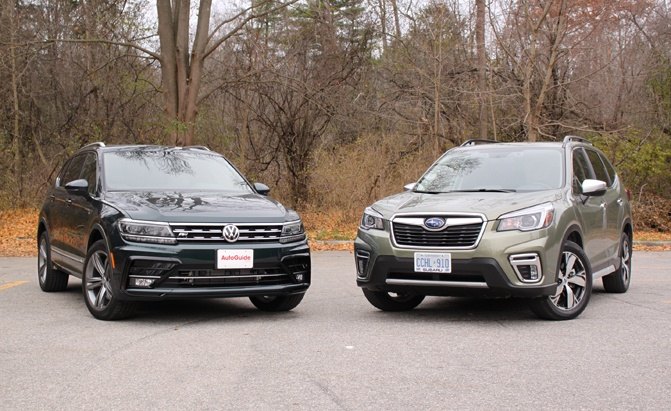























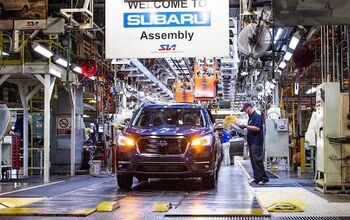
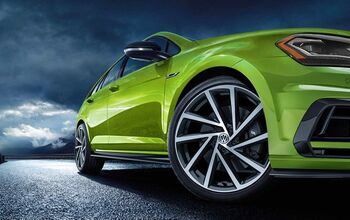
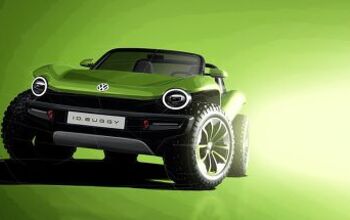
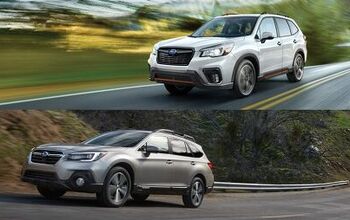

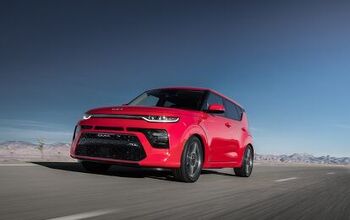


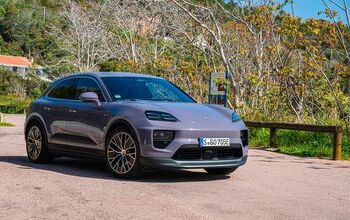


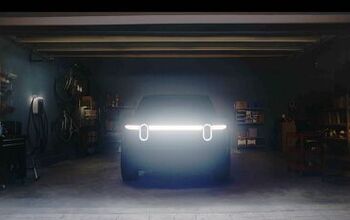
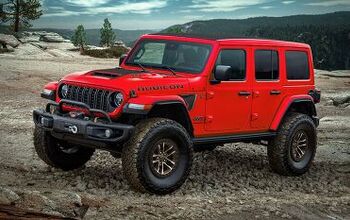
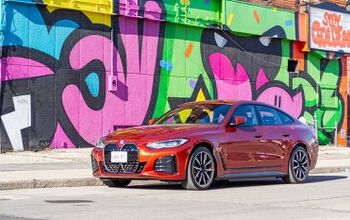
Comments
Join the conversation